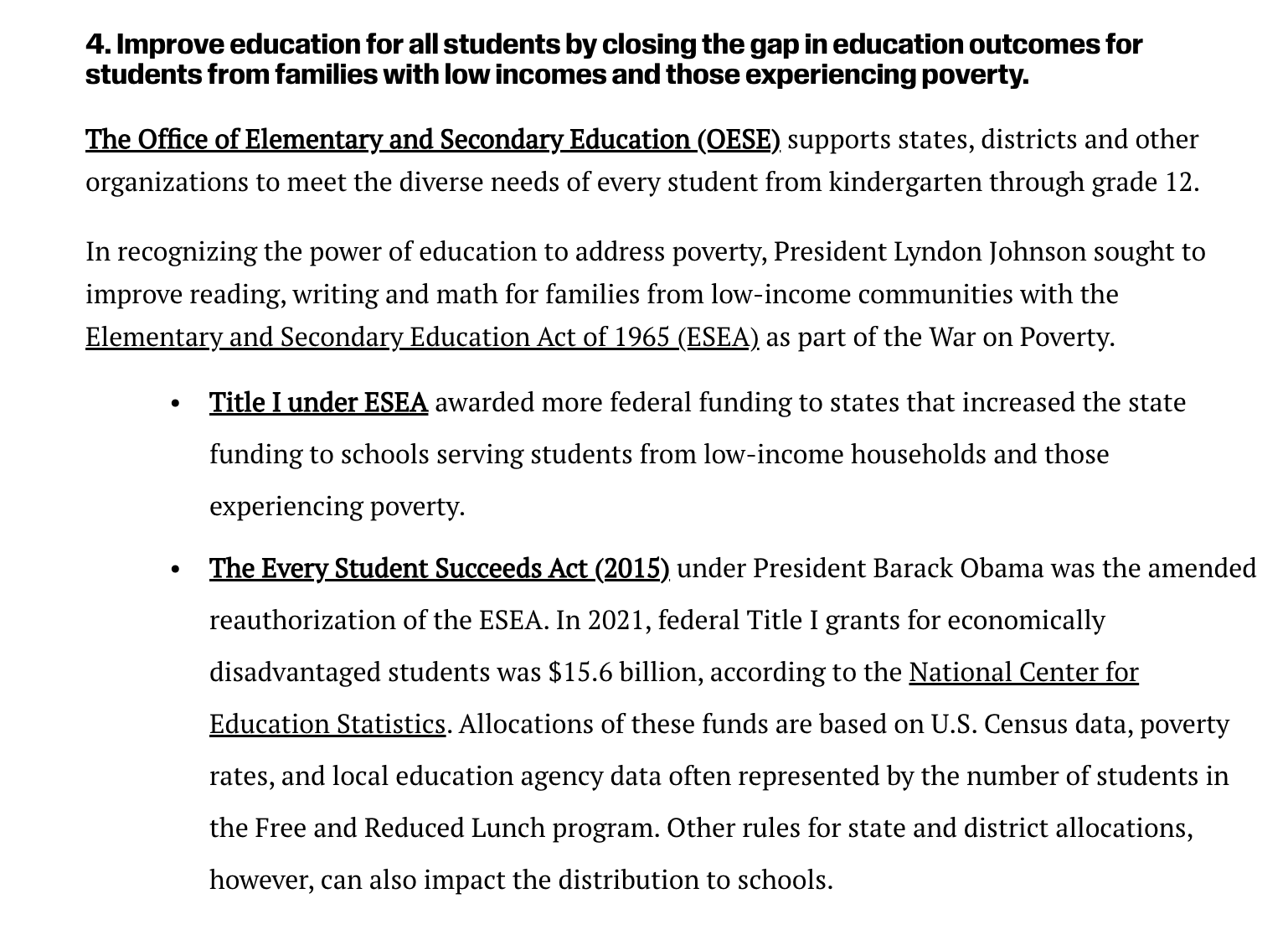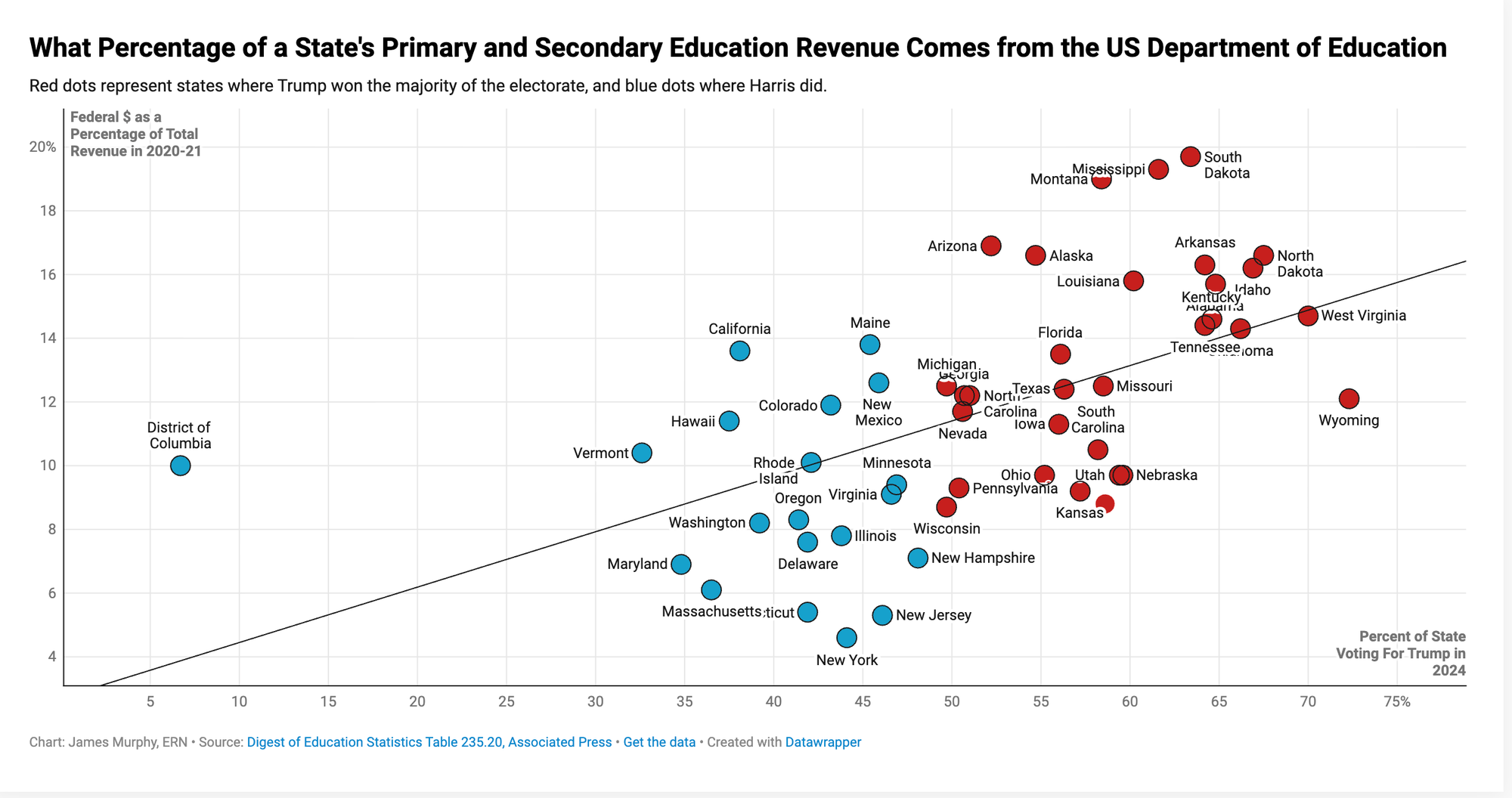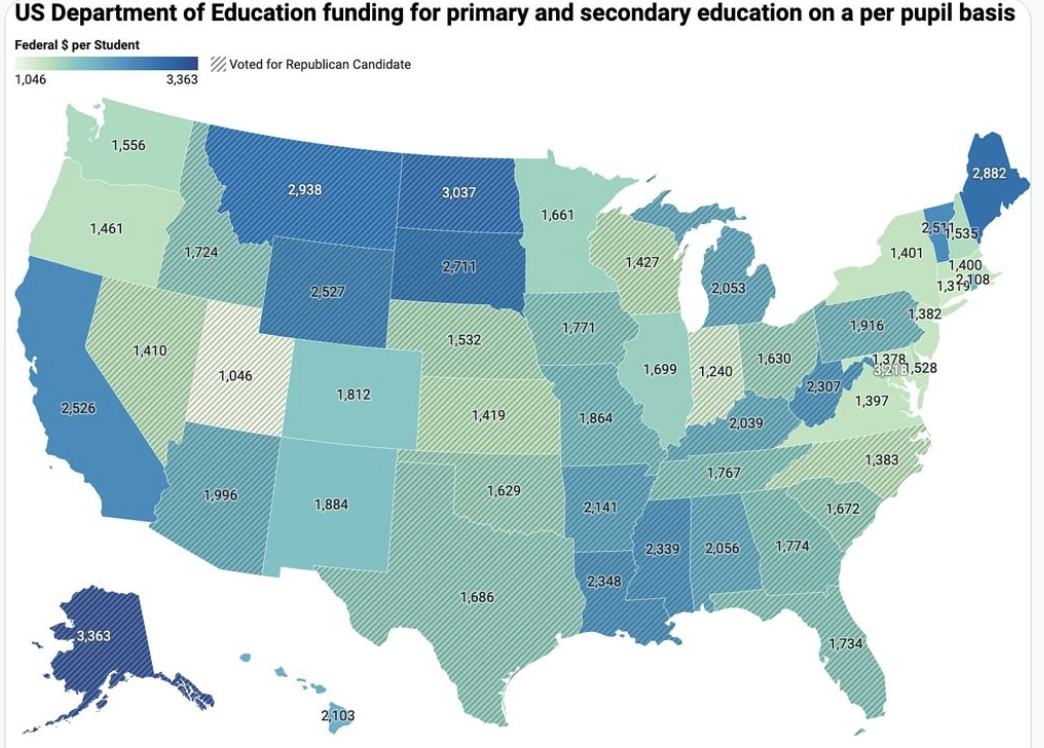With so much news about the Department of Education (and rumors of yet more recent cuts), I wanted to do a quick summary of DOE's role in the education of poor and working-class kids and what may now be at stake for these families.
I want to focus on K-12 in this post (and will do another soon on what's happening with the TRIO and other college access programs, though this still isn't clear to me).
The Southern Poverty Law Center's Learning for Justice publication has an excellent summary of the roles and responsibilities of DOE, at least until this year.
Beyond research and data collection to improve education and the Civil Rights Division to monitor and investigate civil rights violations in schools and colleges, DOE also oversaw direct federal funding to "improve education for all students by closing the gap in education outcomes for students from families with low incomes and those experiencing poverty".
In greater detail, from the Learning for Justice summary:

As with all federal programs, there is bureaucracy in these programs but in a nutshell, federal funding was granted to districts with a high percentage of low income children. Districts (in collaboration with families) developed plans for these funds and typically invested in extra support for children learning to read or support for English language learners. Funding was never adequate, but thousands of children did get extra attention and support. In my state, Washington, 1/3 of school districts got Title 1 funding.
James Murphy has analyzed the percent of each state's K-12 funding that comes (came?) from the federal budget, and his map illustrates how states have very different numbers of families living at or near poverty, and therefore get different levels of federal grants to support low-income children. I find it fascinating that the states standing to lose the most as DOE budgets are cut are states that supported the election of this administration.

In a post on Bluesky, Murphy broke this data down to "per pupil" allocations from DOE funding. Again, I note that states whose children benefitted most from these funds often supported the election of this administration.

Even from this very quick overview, it's clear that we're witnessing significant shifts in commitments to equity in education with threats to close the DOE and to cut staff overseeing these programs, even while those decades-long equity projects were never fully funded. "Sending education back to the states" (as we're hearing often, but with no obvious action) doesn't address the reason that these programs were federalized to begin with: States had very different commitments to equitable education and very different resources to support whatever commitments they may have had.




